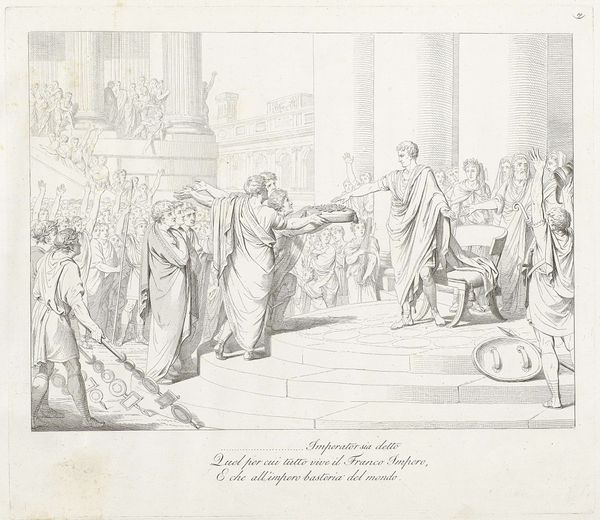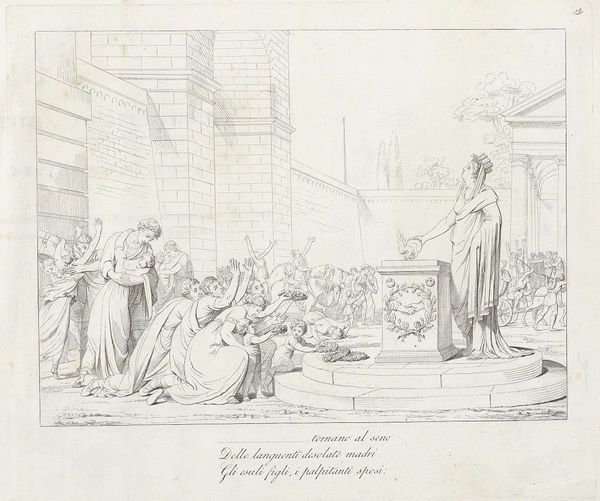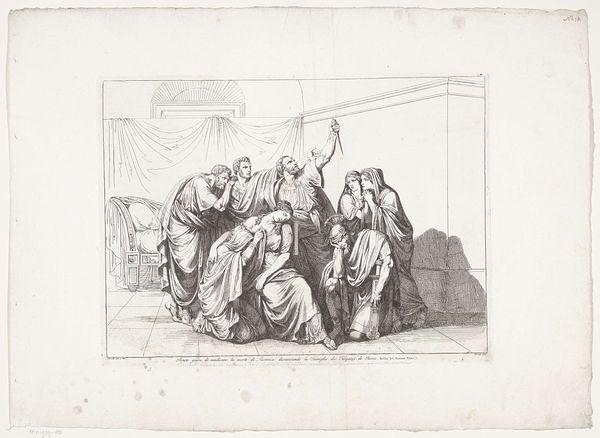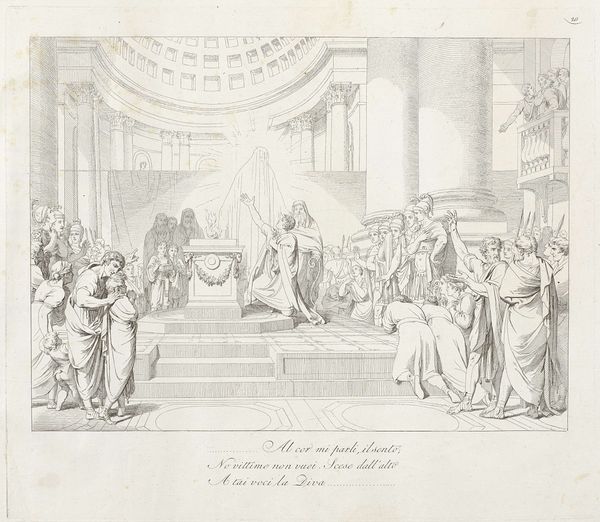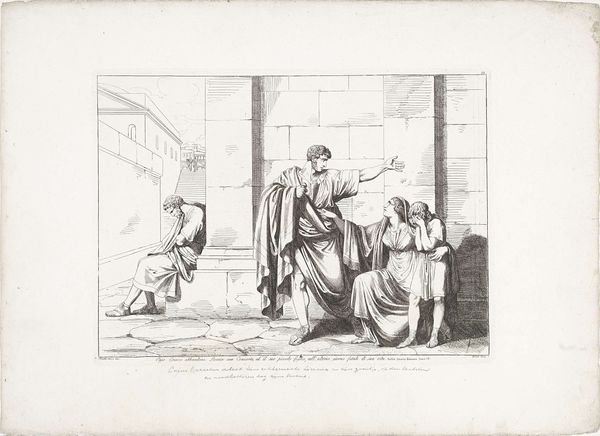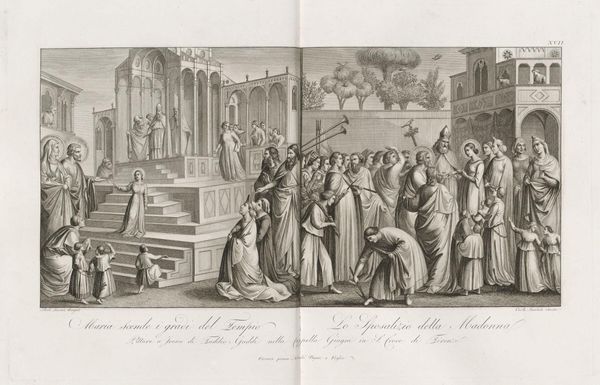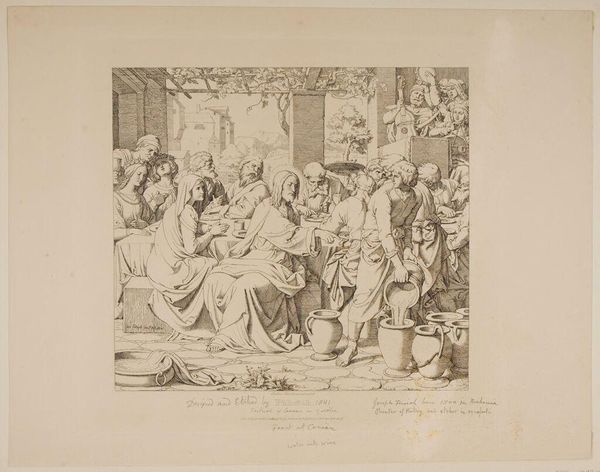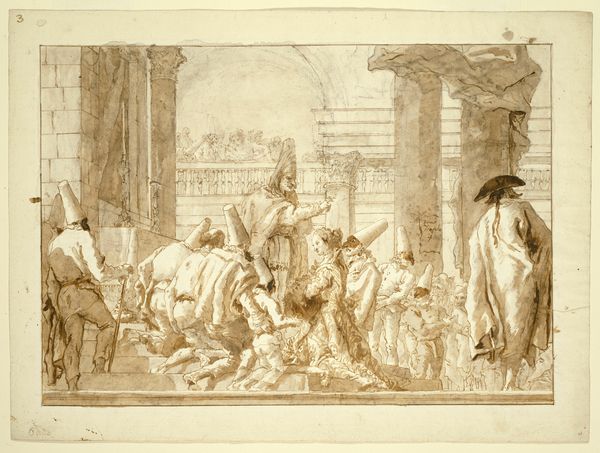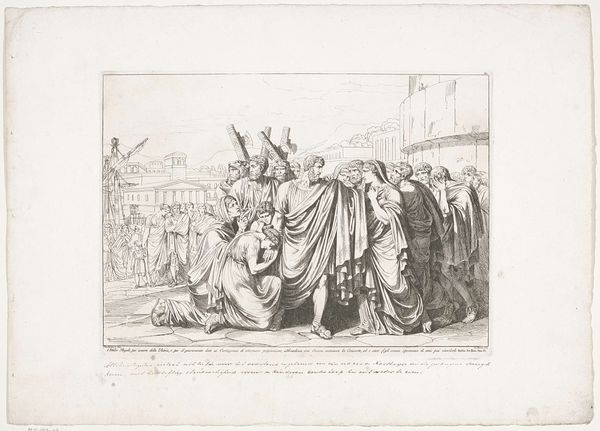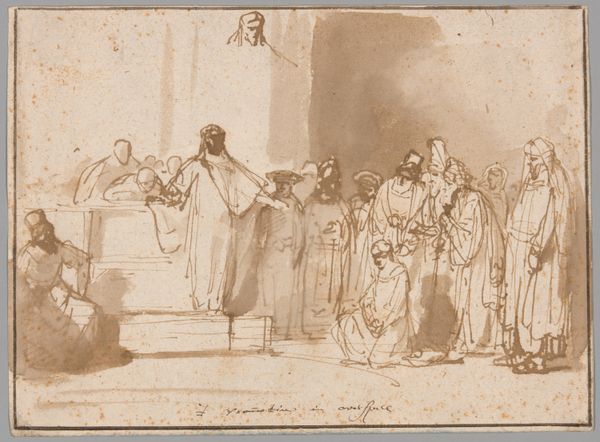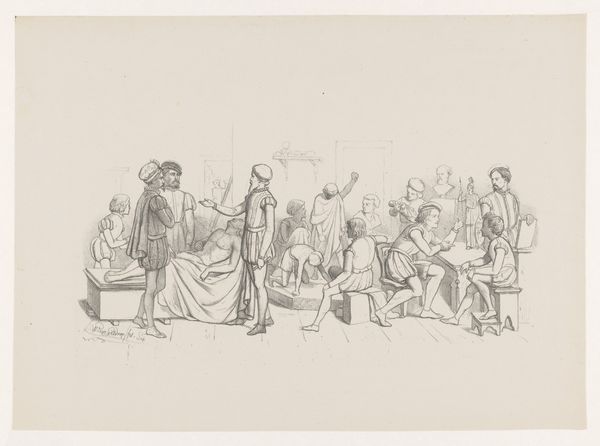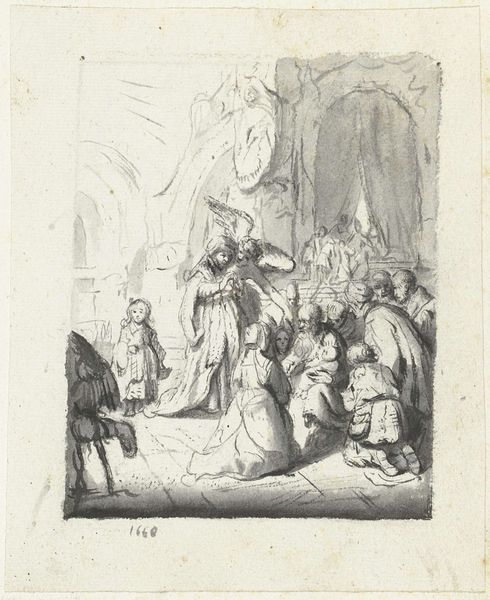
#
comic strip sketch
#
quirky sketch
#
sketch book
#
personal sketchbook
#
idea generation sketch
#
sketchwork
#
sketchbook drawing
#
storyboard and sketchbook work
#
sketchbook art
#
initial sketch
Dimensions: height 332 mm, width 382 mm
Copyright: Rijks Museum: Open Domain
Curator: We're looking at "Mannen en vrouwen bidden voor een ruïne van een tempel tot Napoleon" by Teodoro Matteini, created in 1808. It appears to be a sketch. What strikes you initially? Artist: Oh, the drama! Everyone's on their knees, hands in the air, total despair. The scene's staged almost like a classical tragedy, but there's something quirky about the scratchy lines. Like the artist is sketching out an epic crisis during his lunch break. Curator: Indeed. Note the composition, the way Matteini employs a stark linear style to delineate the figures against the backdrop of architectural ruins. The stark light and shadow enhance the emotional intensity, would you agree? Artist: Absolutely. There's a theatrical quality about how the supplicants are arranged before these broken columns. They’re practically worshipping the memory of Napoleon. Look at the one crumpled at the bottom of the steps. Heartbreak central. Curator: Consider the inscription beneath the image, its textual intervention enhances our reading. The lines underscore the themes of lamentation and the invocation of Bonaparte. How does the text interact with the visual elements for you? Artist: The text! "Ah, where, where are you, Bonaparte?" It's heart-wrenching. Like they're lost without their leader. I think that this work shows a loss, a great sadness; Matteini sketched more than an image—he gave us their mourning! The architectural decay adds another layer; empires crumble, hope fades... Curator: Observe, also, the use of line as both descriptive and expressive tool. Note how this achieves spatial depth, leading the eye towards the implied presence of Napoleon himself beyond the depicted scene. It invites scrutiny. Artist: The incompleteness feels honest. Like these are real, raw emotions, caught in charcoal dust and whispered pleas. Curator: In closing, this sketch encapsulates a particular moment in history— a collective outpouring of loss and supplication in the wake of changing power dynamics, framed within classical forms. Artist: It’s raw. You can feel their pain. And it reminds you that history is made of individual sorrows as much as grand gestures. Pretty powerful for a sketch on paper, don't you think?
Comments
No comments
Be the first to comment and join the conversation on the ultimate creative platform.
